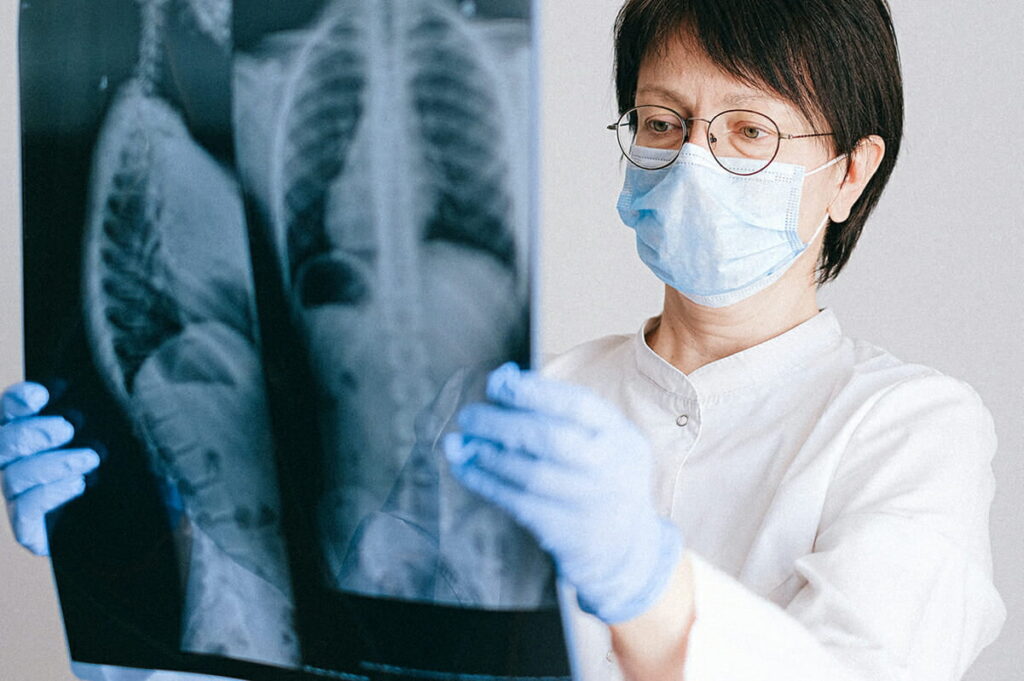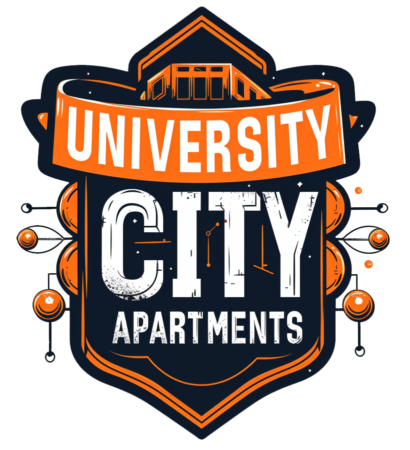Situated in West Philadelphia, University City, earns its namesake from the universities found within its boundaries, including the University of Pennsylvania (UPenn), Drexel University and the University of the Sciences.
As the first university in the country and an ivy league school, UPenn has naturally grown over time into the focal point for medicine and scientific research, both throughout the region and around the world.
Unsurprisingly then, its surrounding area, University City, has too blossomed into a robust medical community that makes it the best place to study, work and live for graduate students, medical residents, faculty and staff of the local hospitals and medical schools.
Penn Medicine
At the heart of the medical research and patient care ecosystem within University City, or U-City as locals call it, is the University of Pennsylvania’s Perelman School of Medicine and the University of Pennsylvania Health System, together known as Penn Medicine.
The first medical school in the nation Penn Medical School is a global leader in education, biomedical discoveries, and patient care and advocacy, which has also been recognized by the U.S. News & World Report as best in the country among multiple specialties, including Ear, Nose, and Throat, Diabetes and Endocrinology, as well as Cancer.
Overtime, Penn Medicine has expanded to become the anchor of the University of Pennsylvania Health System’s care facilities, which include Children’s Hospital of Philadelphia (CHOP), the Hospital of the University of Pennsylvania (HUP), Penn Presbyterian Medical Center (PPMC.
All recognized for their individual achievements in cutting-edge healthcare.
Children’s Hospital of Philadelphia (CHOP)
The Children’s Hospital of Philadelphia, or CHOP, was the first hospital dedicated to infant and child healthcare in the country and is ranked as one of the best providers of pediatric medicine in the country by U.S. News.
Founded in 1855 as the first pediatric teaching hospital, CHOP has grown into the largest pediatric research program in the U.S. that has a unique family-centered care and offers numerous public service programs that give back to the local community.
The 546-bed hospital children’s general medical and surgical facility located south of the UPenn campus and west of the river, CHOP consistently makes honor roll as the first or second Best Children’s Hospital in the country, with multiple highly ranked pediatric specialties which include: cardiology, oncology, and fetal medicine.
More notably, CHOP holds a neonatology intensive care unit (NICU) and pediatric intensive care unit (PICU). The hospital also houses the Roberts Collaborative for Genetics and Individualized Medicine which has made incredible advancements in immunotherapies for cancer and genetic therapy and cures to blindness.
Facing years of full capacity, CHOP is poised to undergo multi-billion-dollar expansions in the following years. Plans which include the development of a new 22-story inpatient tower which will have the ability to house up to 700 patients in private rooms and will solidify CHOP’s place as one of the largest children’s health care systems in the nation.
Hospital of University of Pennsylvania and Penn Presbyterian Medical Center
The Hospital of University of Pennsylvania, or HUP, and Penn Presbyterian Medical Center, or PPMC, are sister hospitals that anchor Penn Medicine which together have earned top “Honor Roll” designations in the country and are ranked #1 in the state of Pennsylvania.
The Hospital of University of Pennsylvania
Nestled on the UPenn campus, the Hospital of University of Pennsylvania is regarded as the first university-owned teaching hospital in the nation.
Within its walls, clinicians have made many of the world’s most notable discoveries in medicine including the discovery of the first general vaccine against pneumonia, the introduction of total intravenous feeding, the development of imaging technologies such as magnetic resonance imaging (MRI), as well as the Philadelphia chromosome which revolutionized cancer research by linking cancer to genetic abnormalities.
In its continuous quest for innovation and patient care, HUP will soon be home to a new inpatient hospital that will replace Penn Tower across the street and adjacent to the Perelman Center for Advanced Medicine. Dubbed the Pavilion, this new facility will consist of 1.5 million square feet of 500 private in-patient rooms and 47 operating rooms across 17 stories.
The pavilion will be among the first in the country to adopt the adaptable room concept in which patient rooms can flex between an intensive care unit, a standard recovery room, or more depending on the evolving needs over time. It will additionally facilitate a hybrid of telemedicine functionalities and high-tech interventional procedures.

Source: Pexels.com
Penn Presbyterian Medical Center (PPMC)
Located on a 2.5-acre campus in West Powelton bounded by Market Street, Powelton Avenue, 38th Street, and Sloan Street lies the Penn Presbyterian Medical Center.
Starting from humble beginnings as a 45-bed facility on 2.5 acres in 1871, PPM stood as an independent hospital from the University of Pennsylvania umbrella situated less than a mile away, until the hospital officially affiliated with the school beginning in 1965.
The Philadelphia Heart Institute at PPMC was the first outpatient pulmonary care facility in the greater region, where clinicians have made great advances in the world of influenza and even, most recently, with COVID-19. Furthermore, PPMC’s Scheie Eye Institute is ranked #17 in ophthalmology by U.S. News & World Report, and their Orthopaedics program ranked #13 in the country.
Penn Presbyterian Medical Center is also a level I trauma center within the Penn medicine system, which treats almost 3,000 patients each year that experience traumatic injuries or are critically ill. Boasting a 97 percent survival rate, PPMC specializes in offering the most advanced specialty care in the larger Philadelphia metropolitan area and has one of the highest patient transfers rates. All available 24 hours a day 7 days a week.
Combined HUP, CHOP and PPMC of Penn Medicine have transformed University City into a bustling hub that attracts world renowned medical researchers, physicians, and clinician providing groundbreaking research and building a sound community that prioritizes patient care and advancements in medicine and technology.
All of which makes University City the best place to live for medical residents, graduate students, doctors, and other working professionals who work in or near HUP, CHOP, PPMC or Penn Medicine.

Source: www.universitycityapartments.com
Living Near Penn Medicine/HUP/CHOP/PPMC
Because on-campus housing made available to UPenn graduate students is limited to just one building, most medical residents, faculty, and staff choose to live off campus in the surrounding areas.
Specifically, working professionals have been known to flock to one of the many pocket neighborhoods within University City including:
- Squirrel Hill & Cedar Park – Among the most diverse and international areas of U-City, Squirrel Hill and Cedar Park has a huge immigrant community and a colorful collection of restaurants, small businesses, boutique stores. Housing here is the most affordable, however, the area has some of the highest property crime rates.
- Garden Court – The most residential area of University City, most of which has been placed on the National Register of Historic Places. Housing in Garden Court is limited to shared living arrangements in historic row homes and older buildings where renovations are not common. There are also few shops in Garden Court, often requiring residents to take a trip outside of the area to shop for groceries and other necessities.
- Spruce Hill – A heavily diverse pocket of U-City, Spruce Hill is a melting pot of art, food, culture and people. Considered the most family-oriented community in the area, Spruce Hill draws in many for events like orchestra concerts and Shakespeare in the Park. However, Spruce Hill is home to the largest population of undergraduate students at all U-City schools, meaning loud nightlife and a bar scene are common.
- Walnut Hill – The most northwestern part of University City, Walnut Hill is characterized by its schools, specialty shops, numerous parks and green spaces as well as housing that largely consists of rowhomes and pre-war garden style apartments. Recently undergoing gentrification though, the cost to live in Walnut Hill has steadily risen. Yet there are still many blighted areas or vacant homes that can be found here, which can make life a bit unsettling.
- Powelton Village – The northernmost part of University City characterized by its suburban feel, and greenery, that is close to Drexel University. Apartments here are commonly older buildings that have been recently renovated and may include certain upgrades.
- West Powelton – Regarded as the more artistic community of U-City, West Powelton holds a unique collection of eclectic bars, cafes, delis, corner stores, and pizzerias, all set against the idyllic urban backdrop of murals painted on the sidewalks, community events, Victorian architecture and picturesque tree lined streets.Thisneighborhood is a huge draw to medical residents as its adjacent to PPMC.
Fortunately, no matter where you decide to live near PPMC, HUP, CHOP, or Penn Medicine, the area is a walker’s and biker’s paradise, with multiple mass transit options available from bus, trolley, subway, and train, that make anyone’s commute seamless.
University City Apartments in West Powelton
There is however, one clean option for graduate students and medical residents when it comes to picking the best place to live in University City near Penn, CHOP, HUP, and PPMC, and that is the University City Apartments.
Located in West Powelton, the northwestern pocket of University City, the University City Apartments are just a quick 5-minute walk from Penn Presbyterian Medical Center, as well as a quick 15-minute walk from Hospital of the University of Pennsylvania, Penn Medical School, and Children’s Hospital of Philadelphia.
Among UPenn’s graduate students, fellows, medical residents, PhD candidates, and working professionals, the University City Apartments are lauded as the ideal community for students seeking the greatest privacy, security, and tranquility.
While modest apartments in more central locations in University City range in price from $1,600 to $2,000 a month, University City Apartments residents enjoy incredible savings within a mor luxurious setting: one-bedroom apartments start at just $1,300 a month.
Furthermore, the University City Apartments provide superior amenities than what can be found at higher prices in other parts of University City such as ample street parking available, quick access to the SEPTA trolley which within 20 minutes transports residents to any part of the major Philadelphia metropolitan area. Its working professional residents also get to enjoy a roof deck ideal for yoga, meditation and community building; a study lounge; and an elevator.
All 19 of the individual apartments found at the University City Apartments have private washer and dryers, modern kitchens, stainless steel appliances, luxury finishes, deep soak tubs, lots of natural light and air conditioning, the latter being a rarity among many renovated buildings found in the University City core.
Ignacio, a University City Apartments occupant and medical resident of Dentistry & Oral Surgery at UPenn, further agrees that the superiority of the apartments is the convenient access it provides anywhere: “It’s very close to University City its only takes about ten or fifteen minutes to get there walking. It’s also very close to the metro station. There are also several bus stops here near the property. We are very happy to be here because the property is not only close to the university but at the same time the management is VERY VERY efficient. Its awesome because we don’t need to worry about anything here.”
If you’re like Ignacio and looking for the best place to live near Penn Medicine, PPMC, HUP, or CHOP, book a self-guided tour at the University City Apartments today: www.universitycityapartments.com

Source: www.universitycityapartments.com





